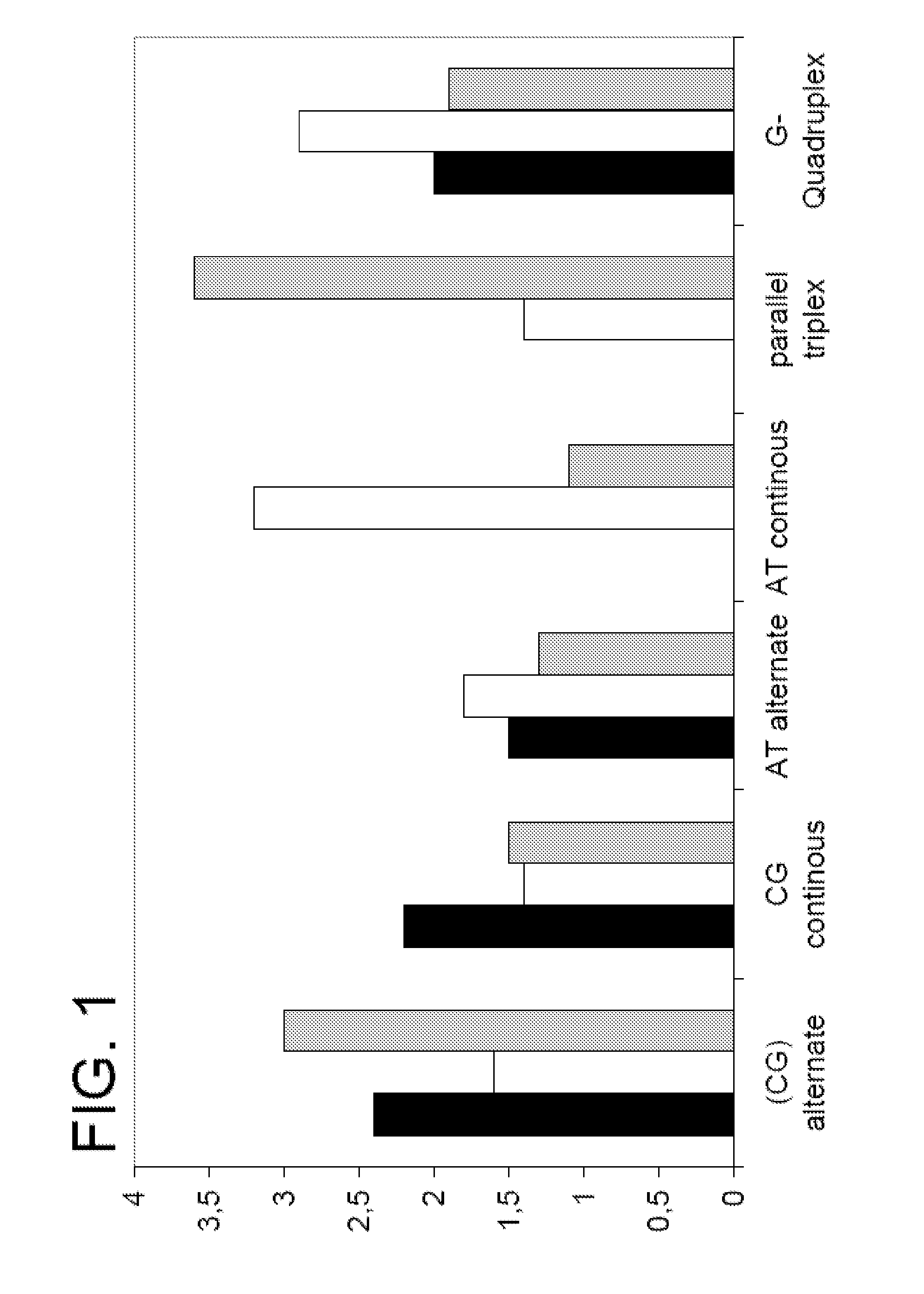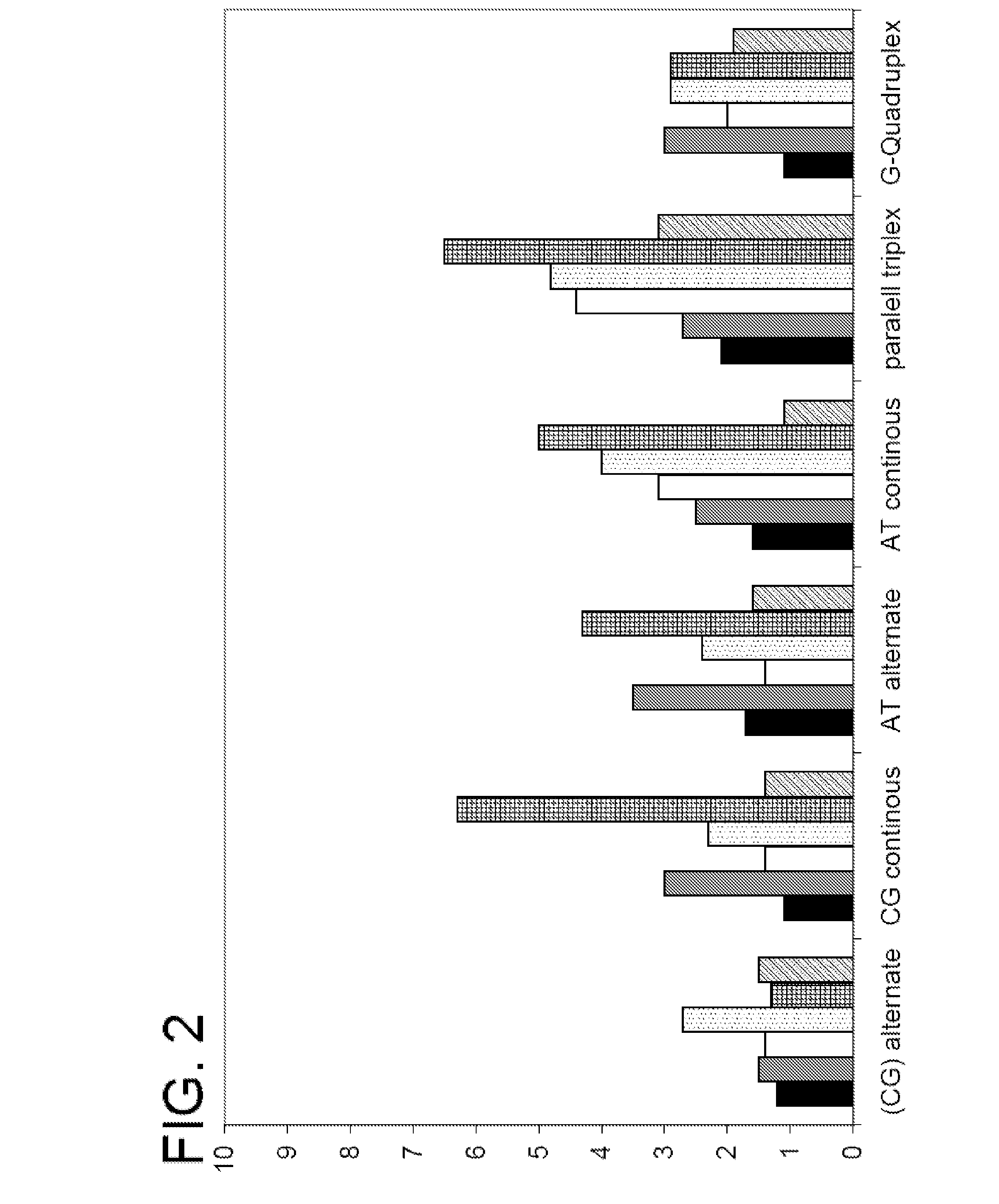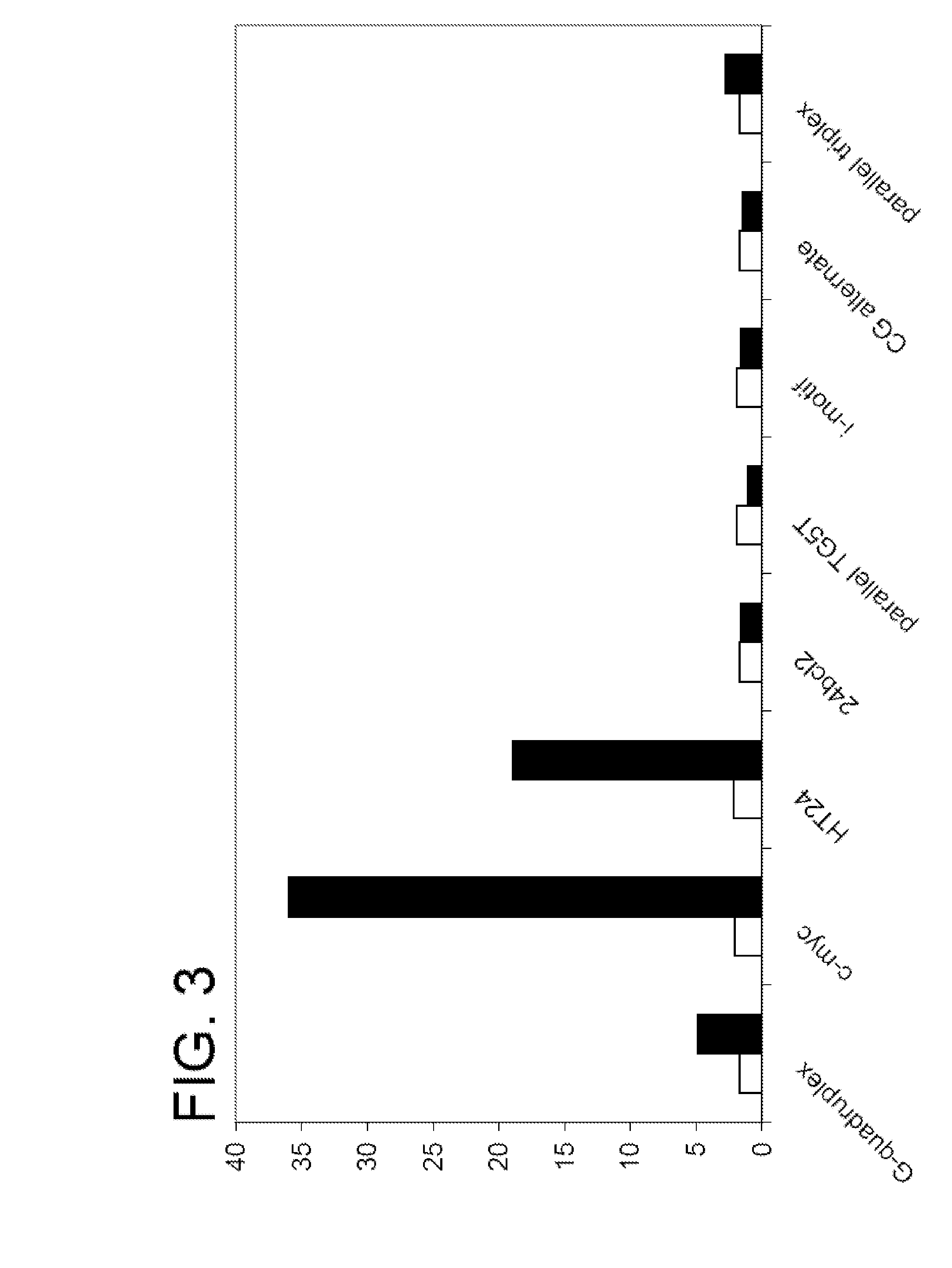Polymers and their use as fluorescent labels
a technology of polymers and fluorescent labels, applied in the field of polymers and their use as fluorescent labels, can solve the problems of reducing specificity, exerting undesirable influence on the structure and mobility of samples, etc., and achieves the effects of improving sensitivity and selectivity, avoiding inconvenience, and high sensitivity and selectivity
- Summary
- Abstract
- Description
- Claims
- Application Information
AI Technical Summary
Benefits of technology
Problems solved by technology
Method used
Image
Examples
example 1
Preparation of 2-(10H-indolo[3,2-b]quinoline-11-carboxamide)acetic acid (Compound 1c)
[0143]10H-indolo[3,2-d]quinoline-11-carboxylic acid (Compound 1a) previously prepared (c.f. D. E. Bierer et al., “Ethnobotanical-directed discovery of the antihyperglycemic properties of cryptolepine: its isolation from Cryptolepis sanguinolenta, synthesis and in vitro and in vivo activities” J. Med. Chem. 1998, vol. 41, pp 894-901) (0.43 g, 1.64 mmol) was dissolved in 20 ml of dimethylformamide together with N,N-diisopropylcarbodiimide (0.25 ml, 1.64 mmol) and 1-hydroxybenzotriazole (0.22 g, 1.64 mmol). The mixture was stirred for 15 minutes. To this solution a mixture of glycine methyl ester hydrochloride (0.15 mg, 1.64 mmol) and N,N-diisopropylethylamine (0.28 ml, 1.64 mmol) dissolved in dimethylformamide was added. After 2 hrs of magnetic stirring at room temperature N,N-diisopropylethylamine (0.2 ml, 1.12 mmol) were added and stirring was continued for 1 hour. The resulting mixture was concent...
example 2
Preparation of 2-(acridine-9-carboxamide)acetic acid (Compound 1d)
[0145]Acridine-9-carboxylic acid (Compound 1b, 0.5 g, 2.24 mmol) was dissolved in 20 ml of dimethylformamide together with N,N-diisopropylcarbodiimide (0.35 ml, 2.24 mmol) and 1-hydroxybenzotriazole (0.30 g, 2.24 mmol). The mixture was stirred for 10 minutes. To this solution a mixture of glycine methyl ester hydrochloride (0.2 g, 2.24 mmol) and N,N-diisopropylethylamine (0.39 ml, 2.24 mmol) dissolved in dimethylformamide was added. After 2 hrs of magnetic stirring at room temperature N,N-diisopropylethylamine (0.2 ml, 1.12 mmol) were added and stirring was continued for 1 hour. The resulting mixture was concentrated to dryness and the residue was dissolved in ethyl acetate. The organic phase was washed with 5% sodium carbonate, saturated. NaCl, 0.1M sodium phosphate and saturated. NaCl aqueous solutions and dried (Na2SO4). Removal of the solvent and purification by chromatography on silica gel (0-4% methanol gradient...
example 3
N-(1,3-dihydroxybutan-2-yl)-10H-indolo[3,2-d]quinoline-11-carboxamide (Compound 2a, monomer Qut)
[0147]10H-indolo[3,2-d]quinoline-11-carboxylic acid (Compound 1a, 0.25 g, 0.95 mmol) was dissolved in 10 ml of dimethylformamide together with N,N-diisopropylcarbodiimide (0.15 ml, 0.95 mmol) and 1-hydroxybenzotriazole (HOBt) (0.128 g, 0.95 mmol). The mixture was stirred for 10 minutes and L-threoninol (50 mg, 0.47 mmol) was added. After 24 hrs of magnetic stirring at room temperature the mixture was concentrated to dryness. The product was crystallized from chloroform yielding N-(1,3-dihydroxybutan-2-yl)-10H-indolo[3,2-d]quinoline-11-carboxamide (300 mg, 90%) of a red solid. HPLC (conditions in example 1) single peak of retention time 14.9 min. 1H-NMR [DMSO-d6, δ, ppm]: 8.41 (wide d, 1H, NH), 8.2 (m, 2H), 7.9 (m, 1H), 7.3-7.6 (m, 5H), 5.44 (wide, 2H, OH), 4.14 (m, 1H, CH), 3.99 (m, 1H, CH), 3.4-3.6 (m, 2H, CH2), 1.21 (d, J=6.6 Hz, 3H, CH3). MS (Cl / NH3) found 350.1, expected for C20H19N3...
PUM
 Login to View More
Login to View More Abstract
Description
Claims
Application Information
 Login to View More
Login to View More - R&D
- Intellectual Property
- Life Sciences
- Materials
- Tech Scout
- Unparalleled Data Quality
- Higher Quality Content
- 60% Fewer Hallucinations
Browse by: Latest US Patents, China's latest patents, Technical Efficacy Thesaurus, Application Domain, Technology Topic, Popular Technical Reports.
© 2025 PatSnap. All rights reserved.Legal|Privacy policy|Modern Slavery Act Transparency Statement|Sitemap|About US| Contact US: help@patsnap.com



